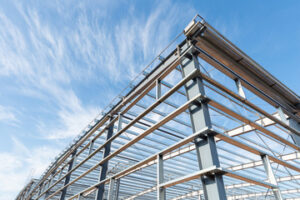Garage Door Repair Tuttle uses several interdependent components to open and close smoothly. These include the tracks, cables, and safety features. These can break down over time.
If you decide to tackle the repair yourself, planning your project well is important. Otherwise, you could inadvertently cause even more damage.

As your garage door sits outside all day, it’s no surprise that, over time, some panels might get damaged. Weather is one big culprit. Constant exposure to sun, wind, rain, and ice can fade or crack your panels. This not only reduces the aesthetic of your home or business, but it can also lower the structural integrity of the door itself.
Other factors can cause damage to your garage door panels, including hail and general wear and tear. Even a small dent can affect the functionality of your door, so it’s important to have any damage evaluated by an expert immediately.
Once your garage door specialist has assessed the damage to your panels, they’ll be able to provide you with the best solution for repairing them. This could include simply replacing the panel that is damaged, or if there’s more extensive damage throughout your door system, they may need to construct a plywood structure in order to keep your garage safe and secure until the repairs are complete.
It’s also important to consider the age and condition of your garage door in conjunction with the damage to your panels. If your door is aging and is beginning to show signs of wear and tear, it may be more cost-effective for you to replace the entire door rather than invest in continuing repairs on an older model.
Broken Belt or Chain
If your garage door’s motor runs but the door doesn’t move, it could mean that either the torsion or extension springs are broken. Without these springs, the door is very heavy and would be difficult to lift manually. Before attempting to repair the door:
- Check that the emergency release cord is firmly pulled and that nothing is blocking the two photo eye sensors or preventing them from functioning properly.
- If your garage door opener still doesn’t operate, make sure it has a fresh battery and that the remote settings aren’t incorrect or outdated.
- If the opener is still malfunctioning, try resetting it by unplugging it for a few minutes and then plugging it back in.
If you have a chain drive, a broken belt or chain can cause erratic movement of the door during operation and lead to premature wear on other components such as roller wheels and hinges. A professional garage door technician should replace the chain or belt, ensuring that it is of a proper length and tension.
Loose track mounting brackets can also cause the door to become misaligned or stuck during operation, as well as create excessive noise or vibrations and pose safety hazards. Loose brackets can be fixed by tightening them using a wrench. If the mounting brackets are completely loose, they should be removed and replaced with new ones.
Malfunctioning Safety Sensors
Safety sensors are an essential component to a well-functioning garage door system. They keep your family, pets and property safe by preventing the door from closing or descending onto objects that could cause injury. They are not infallible, however. Calls about malfunctioning sensors are one of the most common garage door repair requests we receive. While it may be tempting to investigate and correct garage door sensor problems on your own, it’s best to consult a professional. A trained technician can perform quick fixes and more substantial improvements to ensure the safety sensors continue functioning properly.
Misaligned sensors are the most common type of problem. They sit low to the ground, making it easy for pedestrians or children playing near them to bump them out of alignment. Inspect them to see if their lights are solid green or yellow and to check for dirt that may be blocking the beam.
Wiring problems are another common issue. Loose wires can interfere with the transmission of messages between the sensor and the opener. If the light on a sensor is flickering, you’ll need to inspect and repair any wiring connections.
Once the wiring is inspected and repaired, you’ll want to test the sensors by placing an object in the path of the downing door. If the sensors are functioning properly, the garage door will reverse and return to its original position. A monthly test with an object will help prevent mishaps and costly damages. It’s also a good idea to have an annual professional inspection of the sensors. This can catch problems that aren’t obvious to the untrained eye and make sure your system is operating safely.
Damaged Weather Stripping
The weather strip is the thin, rubber strip that lines the bottom of your garage door. The purpose of this seal is to create a solid barrier that prevents air and water from entering your garage. If your weather stripping is worn or damaged, it’s important to replace it to protect your belongings and the integrity of your garage.
The easiest way to tell if your weather stripping is in bad shape is by looking at it. If you see sections of the strip that are dried out, cracked or discolored, it’s time to call a repair technician for garage door replacement.
It’s also important to keep in mind that a cracked or worn weather strip will allow moisture, dirt, pests and rodents into your garage. This can lead to mold, mildew, wood rot and other expensive problems. You can help your garage door last longer by examining and cleaning the weather stripping regularly.
A good tip is to clean it with an all-purpose vinyl cleaner every three months and then lubricate it with silicone-based lubricant. This will help it maintain its elasticity and flexibility, which is vital to preventing cracking and wearing.
A draft in your garage is a normal part of a home, but if it’s become more noticeable or seems to be getting worse, the weather stripping may be worn down and creating an air leak. This can decrease heating and cooling efficiency and cause the garage to feel too cold or hot. It can also allow dust and other debris into the garage, which could damage your garage door or anything stored inside it. Replacing the weather stripping will help to resolve these issues and keep your garage in great condition.
Uneven Doors
When your garage door isn’t balanced correctly, it can cause it to open or close unevenly, which can cause damage to the mechanism. Often, this is caused by misaligned tracks or other problems that can be easily corrected.
A lack of lubrication can also cause your garage door to become crooked. It’s important to regularly lubricate moving parts like the rollers and hinges with a lithium-based grease, which will help reduce friction and improve performance.
Other common causes of uneven doors include:
Loose Hinges
Over time, your garage door’s hinges may loosen and shift out of alignment. This can be a result of normal wear and tear or can be caused by an impact or poor anchoring. It’s a good idea to check the hinges regularly and tighten them as needed.
Obstructions in the Tracks
Just like a train derailing on a rocky track, debris or dirt lodged in the tracks can throw off the balance of your garage door. Make sure to clean out the tracks frequently to remove obstructions and ensure they are properly aligned.
Misaligned Sensors
If you see a red light blinking on your photo-eye sensors, this is a sign that they are out of alignment. This can be a simple fix by adjusting the sensors until they are correctly aligned. In addition, you can also try adjusting the limit adjustment screws on your opener to control how far the door can travel before it automatically stops. These can be adjusted using a screwdriver and will help to ensure your garage door closes fully. If none of these solutions work, it’s a good idea to call a professional to diagnose the problem and complete any necessary repairs.








